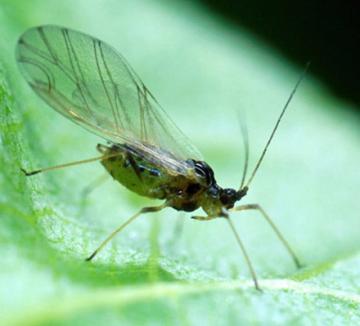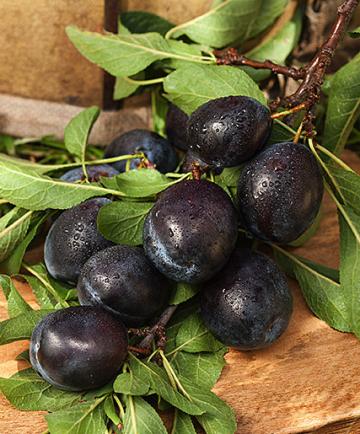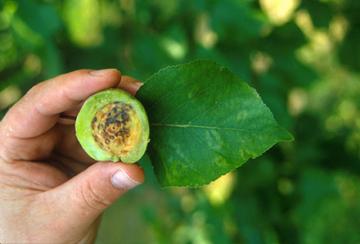Eradicating the Plum Pox Virus
The 20-year fight against plum pox – also known as sharka – is finally over, thanks to a cooperative effort by the Agricultural Research Service (ARS), the Animal and Plant Health Inspection Service (APHIS), and their partners.
On October 17, 2019, USDA declared the United States free from plum pox virus (PPV) – a serious agricultural disease capable of devastating stone fruits like peaches, apricots, cherries, and almonds.
PPV does not affect human or animal health, but it can cause extreme deformities and acidities in stone fruits, ruining their yield and marketability. The virus is transmitted by either aphids (small insects seen widely as pests) or the physical transfer of infected plant material (through grafting or movement of infected nursery stock).
“Because there’s no known cure or vaccine for PPV, the only way to manage the disease involves quarantining and destroying suspect trees,” said Timothy Gottwald, research leader and plant pathologist at the U.S. Horticultural Research Laboratory in Fort Pierce, FL. Gottwald said the issue is further complicated by the fact that the virus is “subclinical,” meaning that the infected plants can exist for months to years without observable symptoms, until it’s too late. By then, growers can only attempt to mitigate the disease by culling trees within a certain radius of the suspected point of origin, which leads to the destruction of some trees that may actually be healthy. Ultimately, the process is time-consuming and costly for the stone fruit-growing community.

An alate (winged) green peach aphid (Myzus persicae), an important vector of plum pox virus. (Scott Bauer, K9602-1)
PPV-D is not the most virulent of the nine known PPV strains and does not appear to affect cherries, it is still easily transmitted via aphids or grafting with infected plant material, and it is capable of causing significant losses to trade. By 2006, the virus was discovered in New York and Michigan as well.
To prevent this disease from spreading further and potentially destroying the $6.3 billion stone fruit industry in the United States, USDA quickly issued an emergency declaration providing much-needed funding and support for the eradication of PPV across the country. Techniques to control and prevent plum pox included field surveys, enforcement of domestic and international quarantine regulations, removal and destruction of infected trees, use of pox-resistant varieties (if available), maintenance of healthy nursery stock, increasing insecticide sprays for the aphid vector, and oversight of aphid travel patterns.
Thanks to the emergency declaration and the collaborative efforts of ARS, APHIS, and farmers, our 20-year bout with PPV has ended.
However, Gottwald warns that the disease could still make a return.
“It’s a constant problem that we worry about,” he said. “Plant material (and with it, diseases and pests) is continually moving around the world and crossing borders.”
To address this continuing threat, Gottwald and his colleagues have successfully trained canines to detect PPV in orchards and in budwood used for plant propagation with more than 99 percent accuracy. Dogs can surveil orchard trees by trotting down tree rows at a rate of about 1-2 seconds per tree, with no need for sample collection and subsequent laboratory processing as required by prevailing detection methods.
APHIS is currently taking steps to ensure PPV does not reappear in the United States. This includes monitoring stone-fruit-growing states, such as Pennsylvania and New York, for potential outbreaks of PPV, as well as closely watching imported plants for signs of the disease. – by Georgia Jiang, ARS Office of Communications.



